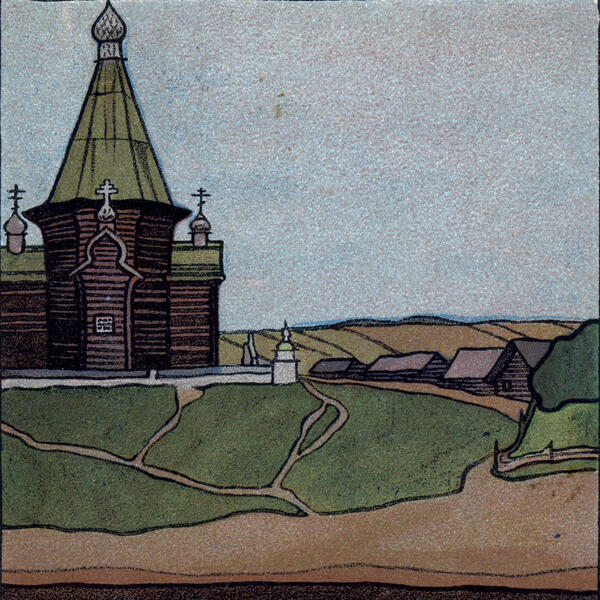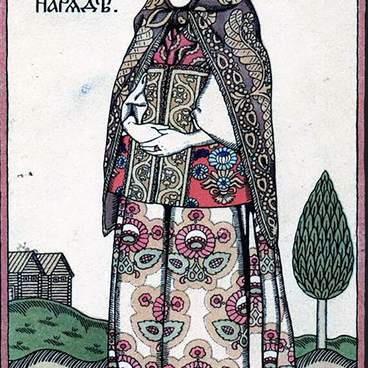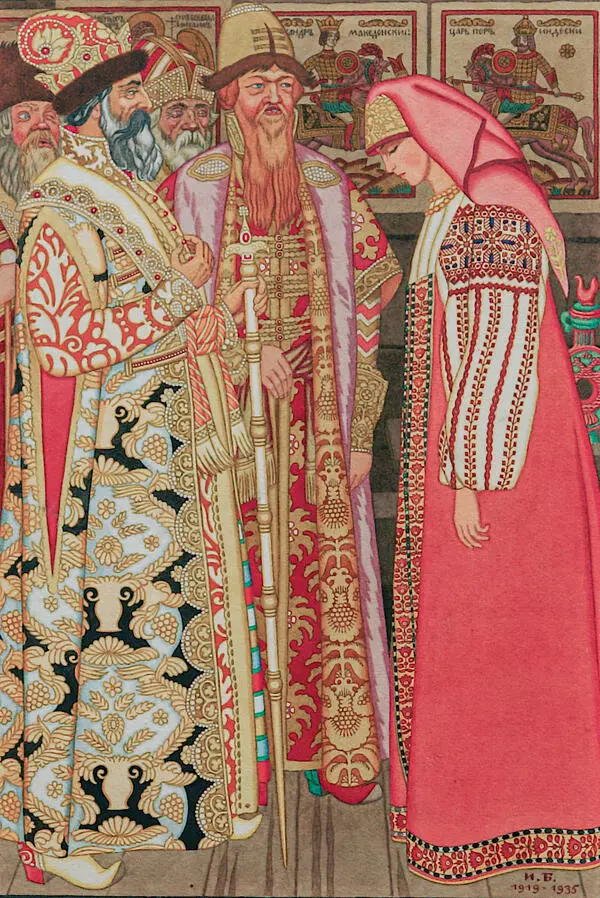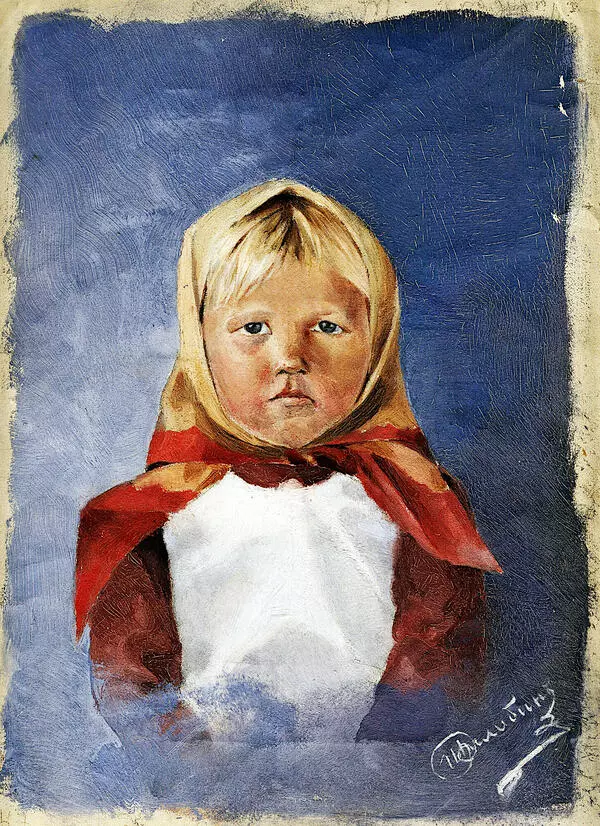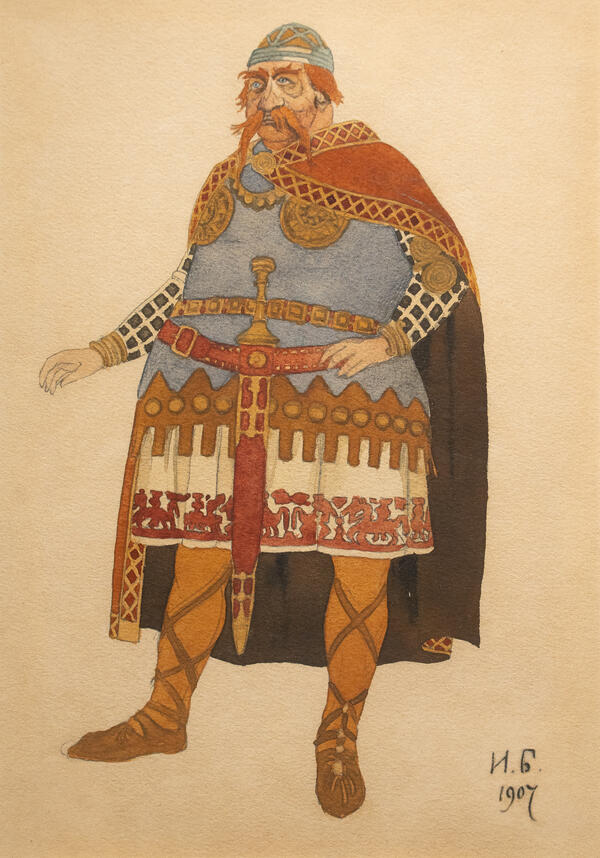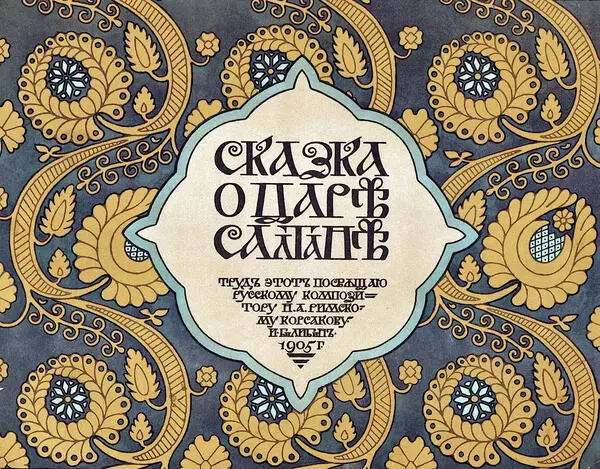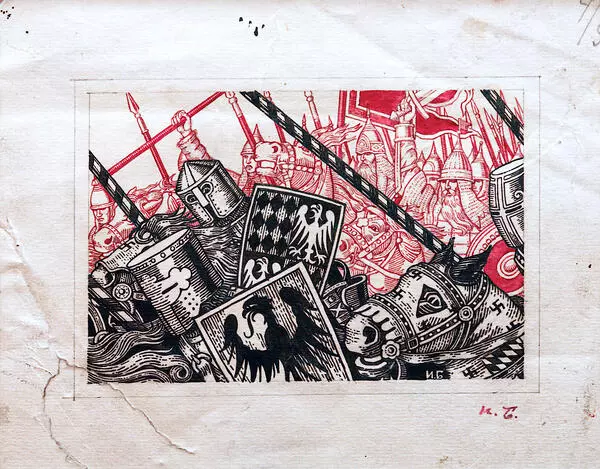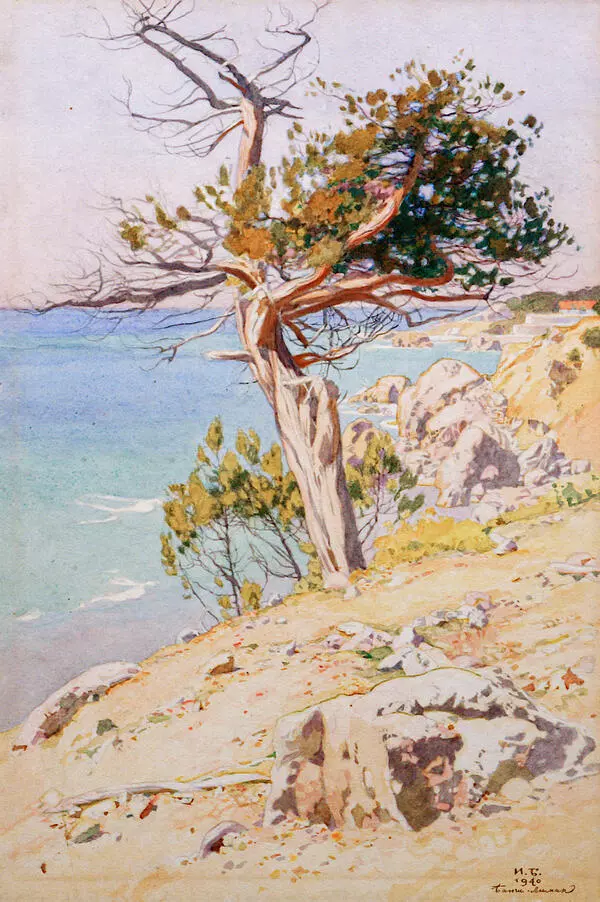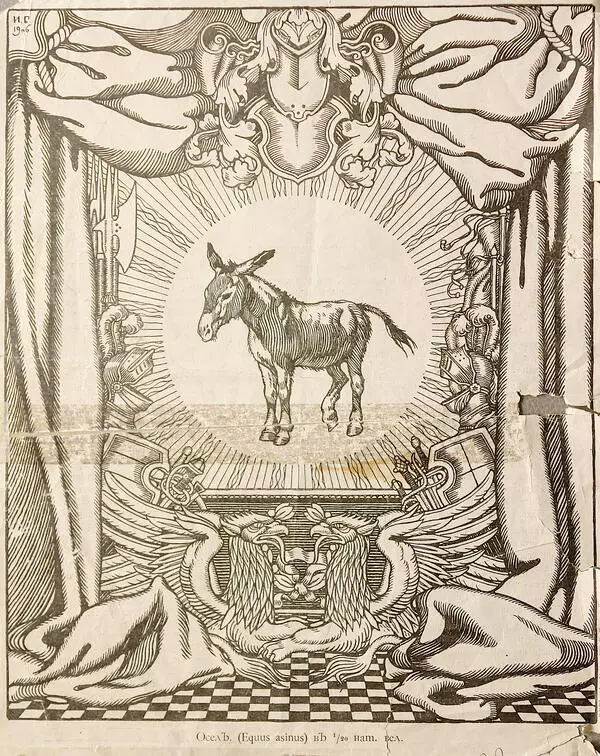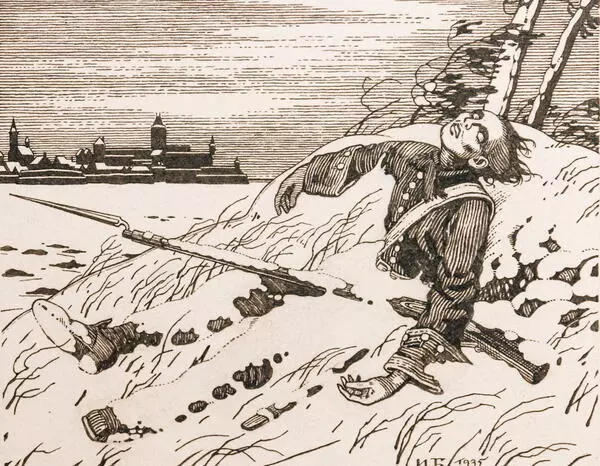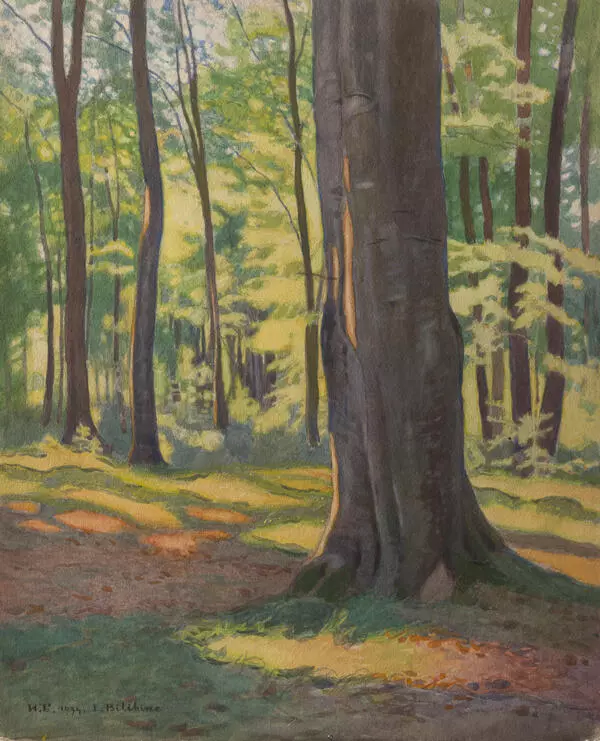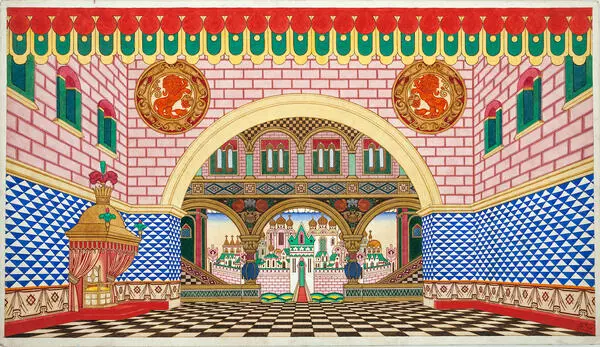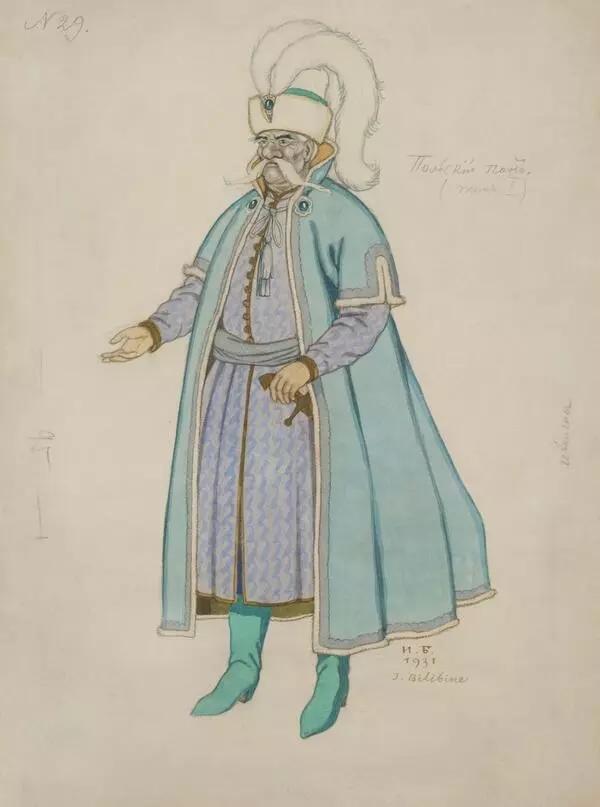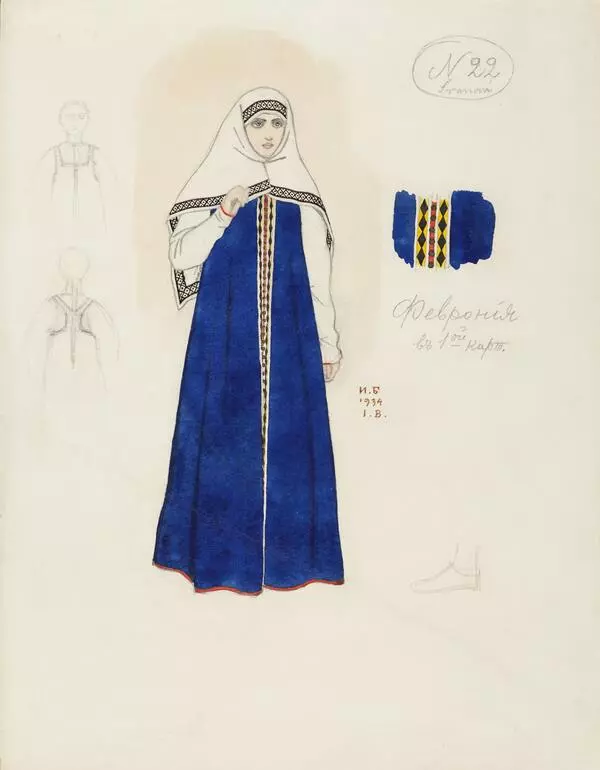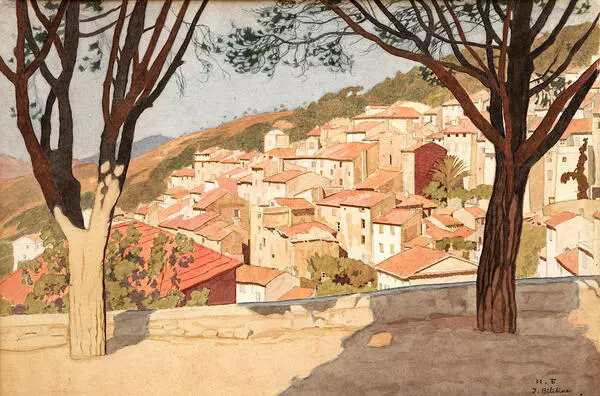The postcard with the image of the Savior on the Kokshenga River is one of ten postcards based on the works of the Russian painter Ivan Yakovlevich Bilibin and published by the Community of Saint Eugenia.
There is a tent-roofed church with an onion dome on the high bank. It is reflected in the wide surface of the river. The space unfolds into the distance, directing the viewer’s gaze from the water to the peasant izbas far away. The pale cloudy sky and fields seem endless. A poignant, slightly sad note defines this northern landscape, in which the artist shows us his dreams of distant, fabulous Rus.
The artist’s impressions from three expeditions to the northern governorates of the Russian Empire inspired such works. Admiring the half-forgotten beauty of the northern region, Ivan Yakovlevich kept depicting northern landscapes, finding in them the most characteristic motifs of folk art.
The wooden church depicted on the postcard was built in the village of Kokshenga in 1682. According to the 1832 inventory, the appearance of the church was as follows: “it is a tent-roofed church, covered with lemekh [wooden tiles], with four-pointed crosses, the inner divisions form the shape of a cross; there are four domes on all four sides, the image of the Kazan Mother of God above the church doors, a porch with two stairs on two sides, covered with battens.” In the 1866 issue of the “Church Vedomosti”, it is indicated that due to dilapidations no service could be held in the upper Holy Trinity chapel. The repairs that followed in 1870 and 1893 somewhat changed the architectural design of the church.
However, Bilibin’s drawing presents the church in its original state. Ivan Yakovlevich managed to get a picture of the church before the unfortunate “restoration” from a local feldsher and amateur photographer. In 1910, the church was completely destroyed in a fire.
Bilibin’s artistic understanding of the traditions of the Russian North was expressed in the complex manner with which he depicted figures and landscapes stylized to look like the Northern art. Subsequently, Ivan Yakovlevich Bilibin often used this technique in book illustrations and sketches of theatrical scenery. So, in his design of the vignette for the article “Folk Art of the Russian North” in the magazine “World of Art”, issue 11, 1904, he depicted a landscape with a tent-roofed church reminiscent of the monuments of northern architecture of the 17th–18th centuries.
There is a tent-roofed church with an onion dome on the high bank. It is reflected in the wide surface of the river. The space unfolds into the distance, directing the viewer’s gaze from the water to the peasant izbas far away. The pale cloudy sky and fields seem endless. A poignant, slightly sad note defines this northern landscape, in which the artist shows us his dreams of distant, fabulous Rus.
The artist’s impressions from three expeditions to the northern governorates of the Russian Empire inspired such works. Admiring the half-forgotten beauty of the northern region, Ivan Yakovlevich kept depicting northern landscapes, finding in them the most characteristic motifs of folk art.
The wooden church depicted on the postcard was built in the village of Kokshenga in 1682. According to the 1832 inventory, the appearance of the church was as follows: “it is a tent-roofed church, covered with lemekh [wooden tiles], with four-pointed crosses, the inner divisions form the shape of a cross; there are four domes on all four sides, the image of the Kazan Mother of God above the church doors, a porch with two stairs on two sides, covered with battens.” In the 1866 issue of the “Church Vedomosti”, it is indicated that due to dilapidations no service could be held in the upper Holy Trinity chapel. The repairs that followed in 1870 and 1893 somewhat changed the architectural design of the church.
However, Bilibin’s drawing presents the church in its original state. Ivan Yakovlevich managed to get a picture of the church before the unfortunate “restoration” from a local feldsher and amateur photographer. In 1910, the church was completely destroyed in a fire.
Bilibin’s artistic understanding of the traditions of the Russian North was expressed in the complex manner with which he depicted figures and landscapes stylized to look like the Northern art. Subsequently, Ivan Yakovlevich Bilibin often used this technique in book illustrations and sketches of theatrical scenery. So, in his design of the vignette for the article “Folk Art of the Russian North” in the magazine “World of Art”, issue 11, 1904, he depicted a landscape with a tent-roofed church reminiscent of the monuments of northern architecture of the 17th–18th centuries.

